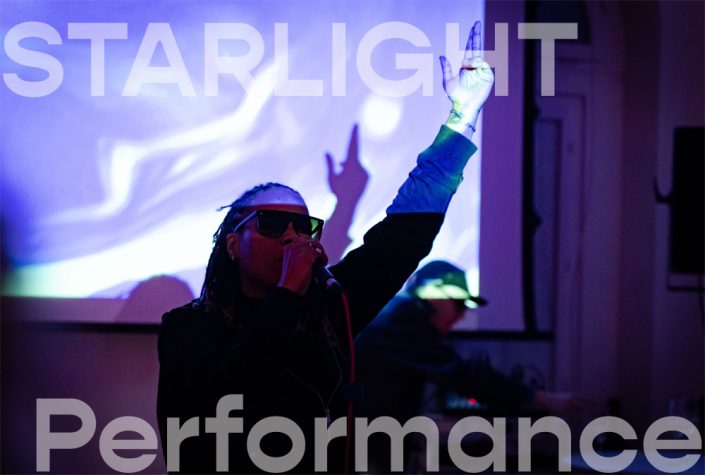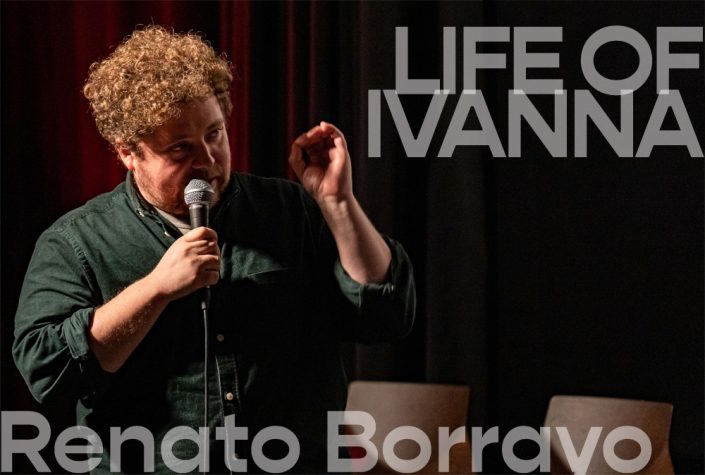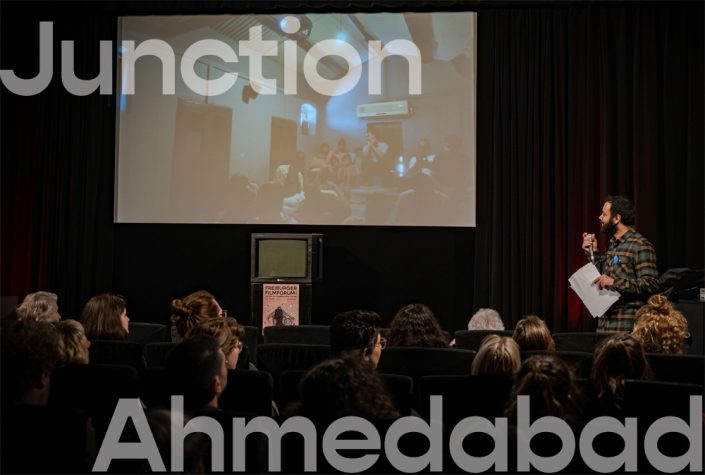After their retirement about 15 years ago, Mrs. and Mr. Kikuchi left Tokyo and started a new life in the rural and mountainous region on the island of Kyushu in southern Japan. Here, they founded HINOKI FARM, where they built the buildings and began tending the fields and a garden on their own. The documentary HINOKI FARM is a study of their daily work and the simple things in life. It tells the story of the way life goes in old age, taking us on a visual journey into ancient methods, slowing down our everyday hustle. The com•position of the film and the smooth camera flows have an almost cathartic impact on the viewer.
Solaris
Is this a dream palace, a temple of excess or something totally different? SOLARIS exposes the closing hours and the night-time heartbeat of Tallinn’s Solaris shopping mall – a place built to entertain and mirror the world. The ambiguity of the camera’s gaze and the immersive soundscape confront the viewer with the raw materiality of fleeting encounters, circulatory systems and a gradually transforming atmosphere. Between neglected consumer goods and the rhythm of an ongoing system, SOLARIS creates an exceptional and almost surreal view on the world of things. (Pavel Borecký)
Strange Beasts
Set on the outskirts of the Bowland Fells, North Yorkshire, this film contains no dialogue, but is instead a sensory exploration into the realms of an English dairy farm. Paired with the experimental use of soundscape and contact microphone recordings, the camera is a quiet witness as the parlor bustles with a sea of pied cows, the landscape hums with the sound of electric wire and a calf is pulled into existence with the tug of a rope.
Up-Rooted
We consist of fragmented information, fragmented stories. What parts of us derive from our ancestors? Do we repeat their patterns? What is left of our family history? Their stories are gone in a moment, in a wink of an eye. Could our roots be lost, or are they only hidden? UP-ROOTED is an experimental sensory ethnography with super-8 film that touches on three young women’s relationship with migration and ancestry.
People, Moves, Places
How do you document or capture the particular “tone” of local inhabitants living in their everyday surroundings? And how do you get each of them to express their own personality with such an authenticity that their portraits might even reveal something that they didn’t knew about themselves? This choreographic documentary shows a series of interrelational field recordings from Siglufjörður on the northern coast of Iceland. Through an artless concept of repetitions and bodily gestures, an anthropological portrait of the inhabitants in this small fishing village gradually emerges. Each of them is articulating their own person – not in the dimension of lingual communication, but simply through the similarities and differences that only the viewer is able to comprehend. (Troels Primdahl)
Three Times Piparsod: Life in an Indian Village
It all began with the idea to initiate a cultural exchange: Two filmmakers, an Indian and a Frenchman, were to create their own personal take on the same subject. Both were given the same timeframe and the same technical conditions for the project. As an outsider, the view of the Frenchman remains on the surface of things: he portrays his initial impression of external appearances without preparation, without knowledge of the language. The camera becomes the instrument of this discovery and its “naïve” presentation. Raymond Depardon, reporter, photographer, and great filmmaker of the cinema direct is able to pull off this very difficult feat. His Indian counterpart is Saeed A. Mirza, who is familiar with the realities of life in India and has made a name for himself as a socially engaged filmmaker.
“The future of India lies in its villages,” Nehru once said. The village of Piparsod had already been researched for more than twenty years by the ethnologist Jean-Luc Chambard, whose KALAVATI, shot in 1961, became an initiative part of this trilogy. Chambard published the book Atlas d’un village indien – Piparsod, Madhya Pradesh in 1980, and the photographer Marie-Laure de Decker was also involved in this interdisciplinary project. The three parts of the trilogy are not screened chronologically, but in a movement from outside to inside. First a discovery without words, then a jump into social actuality and finally, like remembering, the ethnographic backstory.
PIPARSOD – KALAVATI OU L’ART D’ETRE FEMME EN INDE
Indien, Frankreich 1961 / 35 Min. / BetacamSP (von16mm) / OF
Regie, Kamera, Ton: Jean-Luc Chambard; Schnitt: Philippe Luzuy
KALAVATI follows the life of women, a life that consists mostly of work: fetching water, washing laundry, braiding each other’s hair, collecting fruit, and preparing food. They patch a house with clay, give the walls and courtyard a smooth coating, and artfully decorate the floor with white ornaments. The last third of the film documents two major celebrations in which women play an important role: the Holi festival and a service in the honor of a goddess.
The fish market and the fish
This film shows pictures of daily life in the Portuguese fishing village Sesimbra, south of Lisbon, during Salazar’s dictatorship in 1964. Mau’s photographs of fish displayed in geometric patterns and Fichte’s spoken text complement one another. The latter seems like notes of an interview with a typical young fisherman who goes out to sea at night, lives in a two-room apartment with his parents and siblings, perhaps has a fiancée he can’t afford to marry, and has to serve his military duty soon or has just returned from serving in Angola. Yes, some people are tortured. Yes, there are spies everywhere. These two remarks offset the otherwise harmless descriptions. The list of all the names of fish that enable the village to survive in collective poverty is long.
The day of a casual dock worker
“He gets up around five, when the man who is writing about him goes to bed.” This is how the author Hubert Fichte begins his story about the “casual dock worker.”
Leonore Mau, a photographer, originally did not know much about photofilms, but she learned quickly. Roughly 500 photographs were needed for 20 minutes of film. Mau had gotten to know the dock worker in the Palette bar. She followed him with her camera, photographing him at home with his family, on his way to work, to the “Admi” (where jobs are assigned), to the launches, to the boat hatches, and later to his regular bar around the corner. At the end of the day, each docker had moved 660 bags, equaling 30 tons. The spoken text and images, which are interspersed with short film sequences in a kind of television format, create a precise report about life on the docks.
First Contact
The Australian brothers Michael, Dan, and James Leahy were the first white people to go on an expedition from 1930 to 1934 to the uncharted mountainous area of New Guinea, looking for gold. Unlike other adventurers, they had a camera with them. 50 years later, Bob Connolly and Robin Anderson followed in the footsteps of these “conquistadors” in this movie in which they show original film material together with statements by surviving indigenous people who remember the Leahys. Much has happened in the years between when the first images were recorded by the Leahy brothers and these new scenes. Colonialism, history, and acculturation occur between the images and are only visible in the discrepancy between then and now. (see Die Fremden sehen, Trickster Verlag 1984)
“The Papuans tell how they thought the white men were their ancestors, bleached by the sun and returned from the dead. They were amazed at the artifacts of 20th century life such as tin cans, phonographs and airplanes. When shown their younger, innocent selves in the found footage, they recall the darker side of their relationship with these mysterious beings with devastating weapons”. (…) FIRST CONTACT is one of those rare films that holds an audience spellbound. Humor and pathos are combined in this classic story of colonialism, told by the people who were there.” (Documentary Educational Resources)
The Exiles
Like many others of her generation of Native Americans, Yvonne grew up in a reservation before moving to Los Angeles. She shares a two-room apartment with her husband Homer and five other young Indians. Since Yvonne got pregnant, her thoughts have been constantly revolving around the future, her own and that of her baby. The men, on the other hand, live from the fleeting kicks that they find in the restless nights on the streets of downtown and in the main street bars. After researching in the Native American community in Los Angeles for years, Kent Mackenzie began working with his protagonists on The Exiles in 1957. The film, which was completed three years later, is one of the first – and still very few – films about young Indians in the big city. For his empathetic observations, Mackenzie found poetic forms far from any kind of romanticizing. His graphic sense for nocturnal Los Angeles, the use of interviews with the actors as the inner monologues of the protagonists, and the soundtrack of the rock ’n’ roll band “The Revels” from radios and jukeboxes make The Exiles a masterpiece of great beauty and integrity. Its restoration closes another gap in the history of independent cinema.









